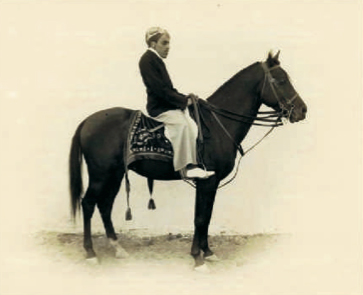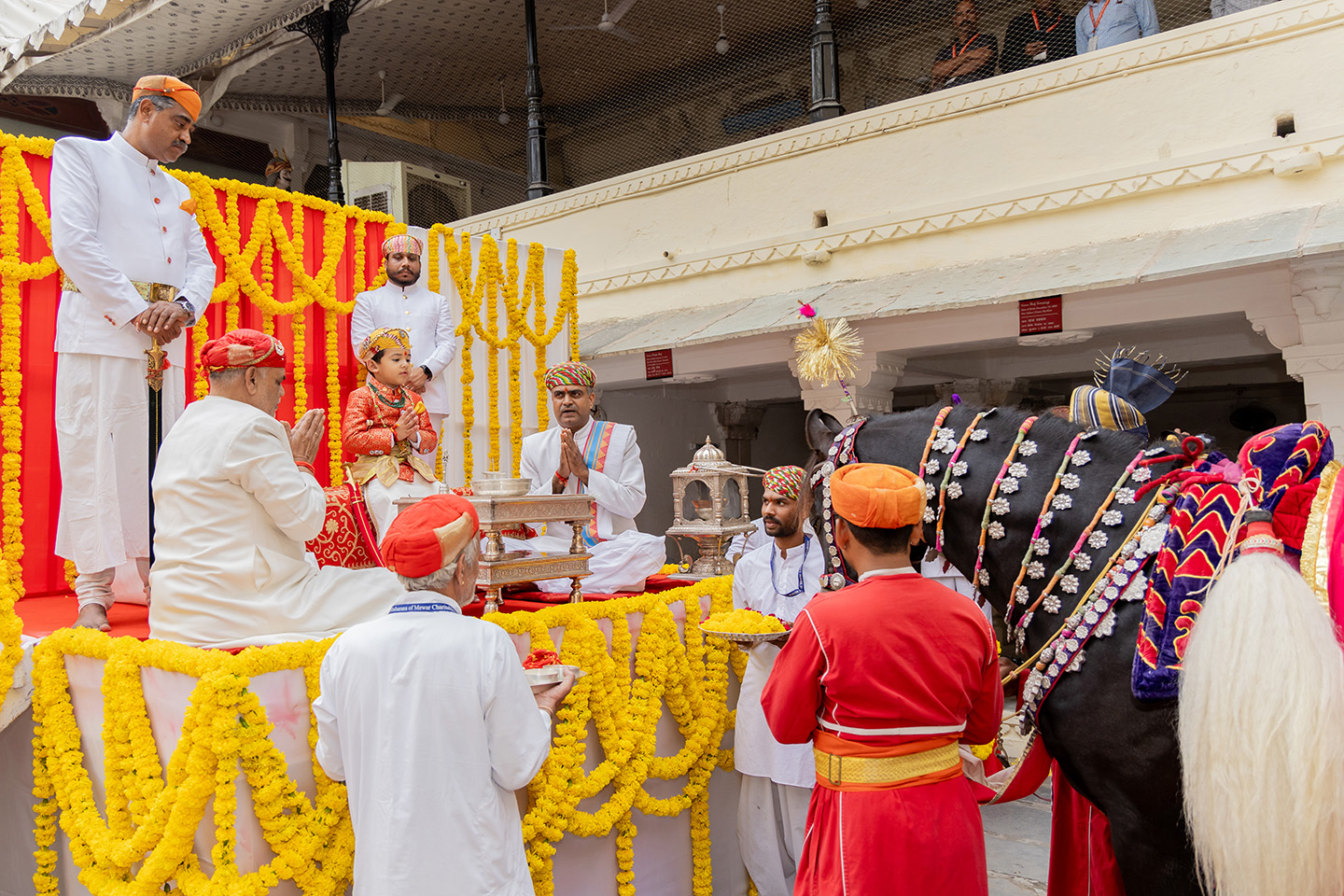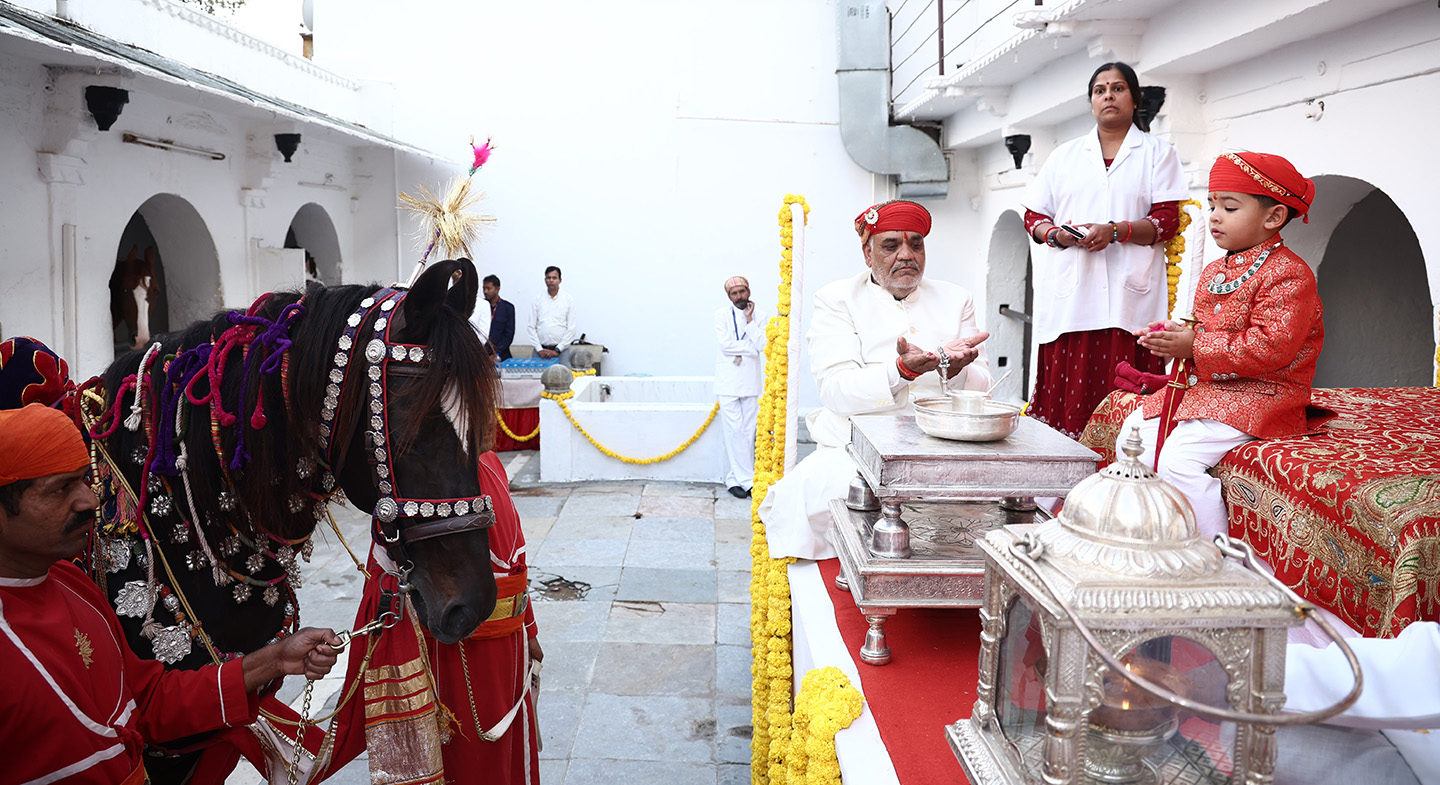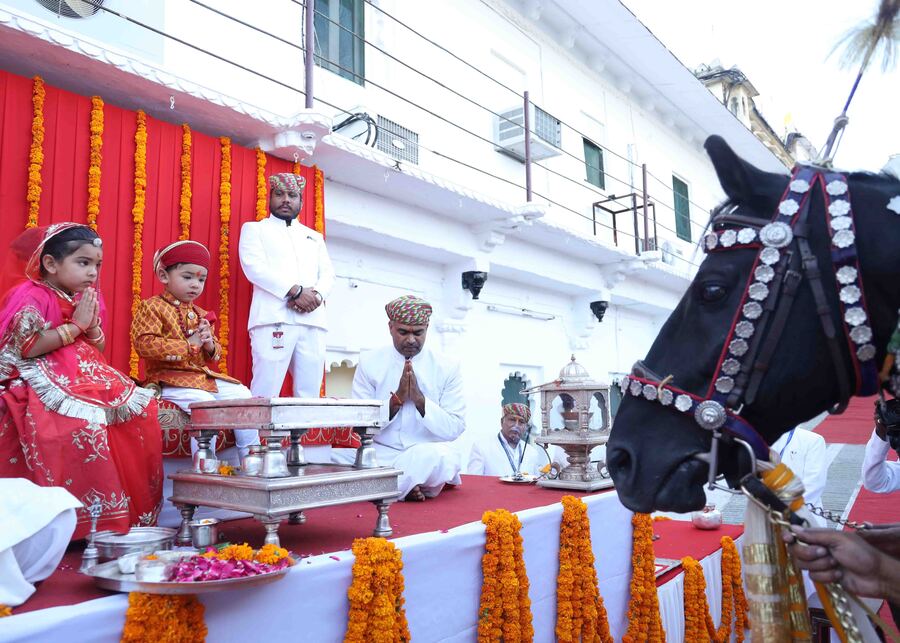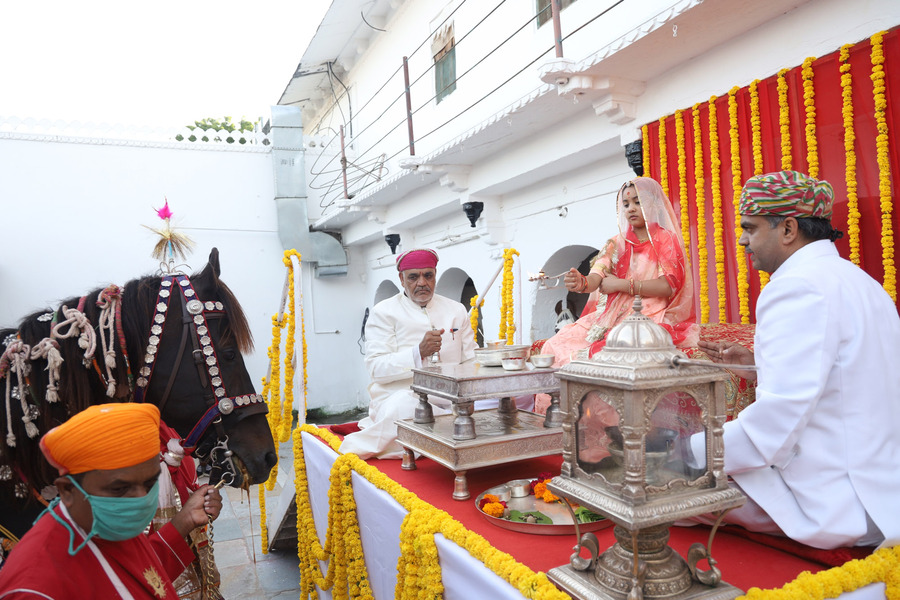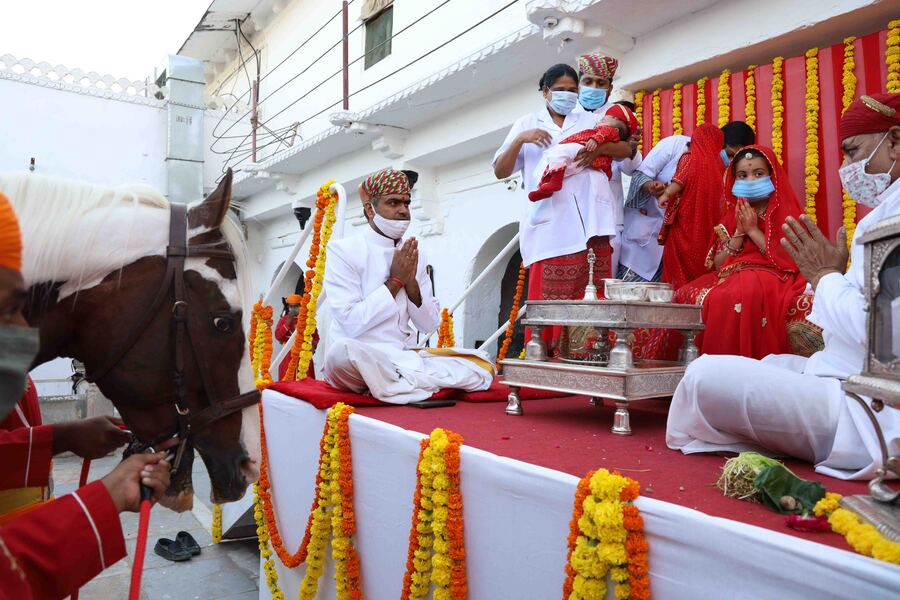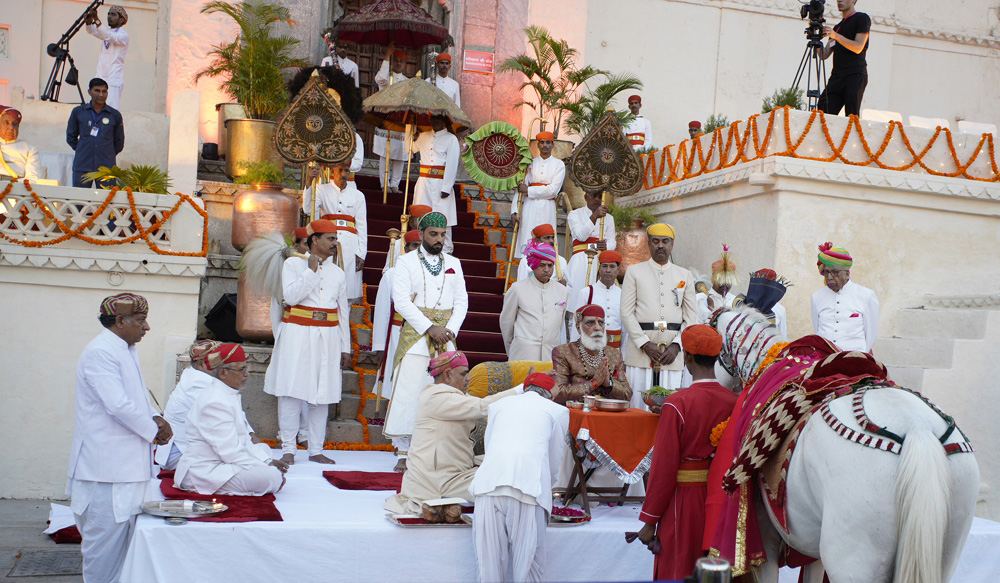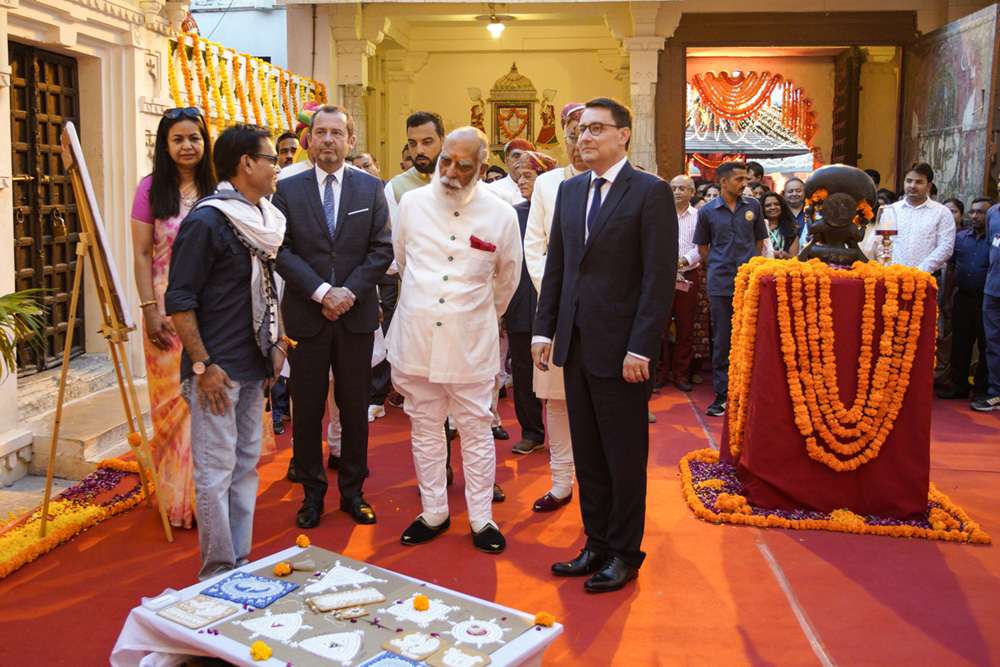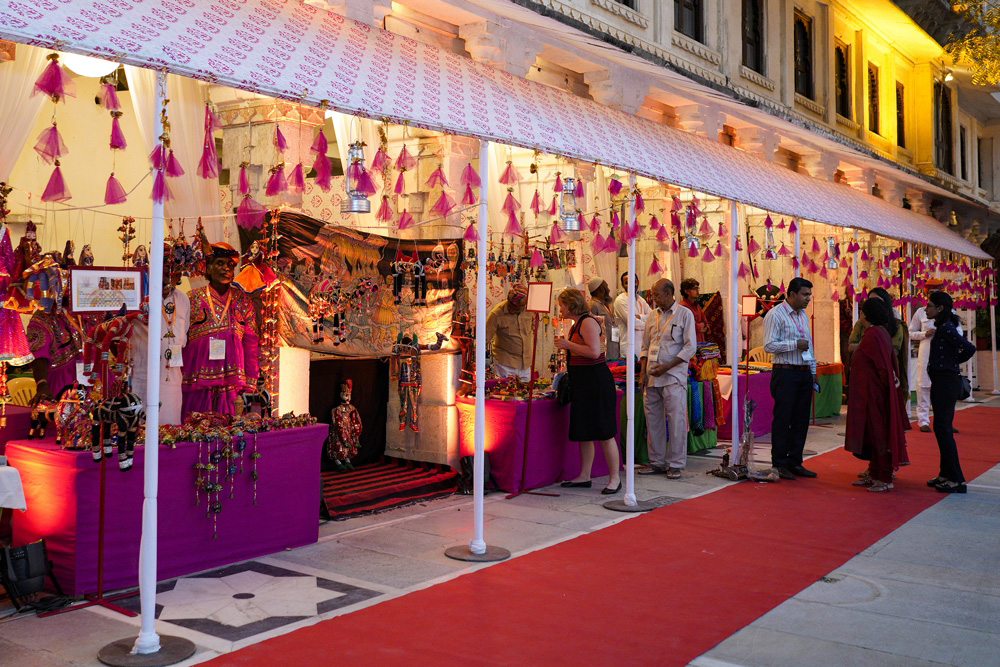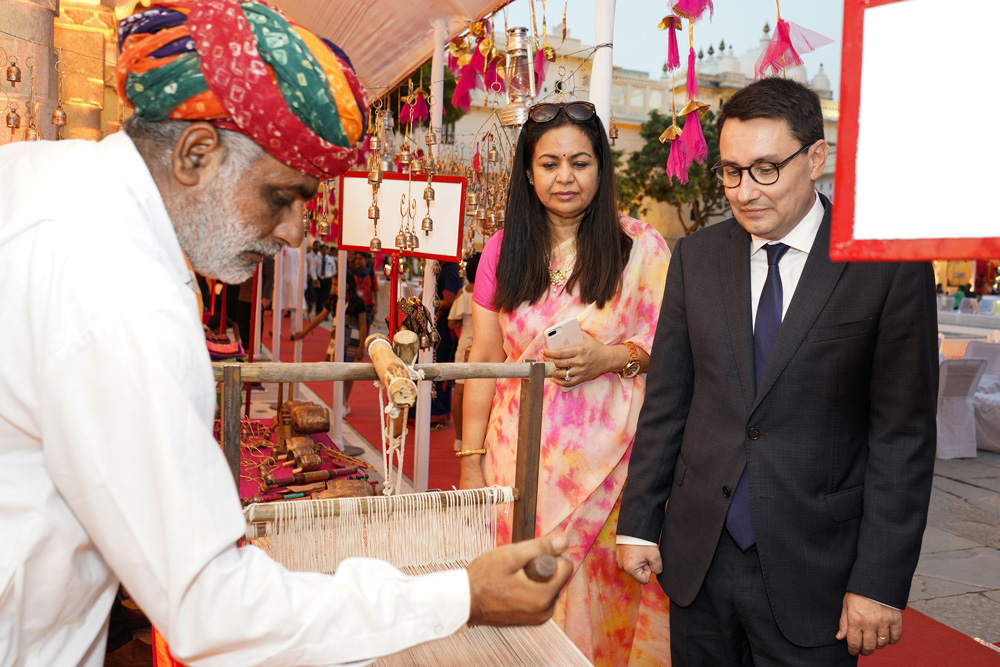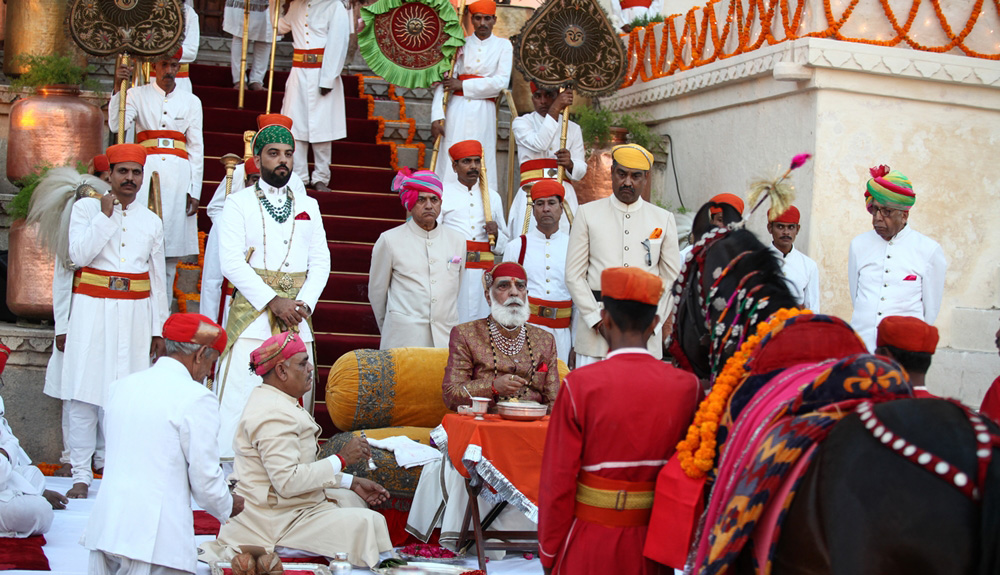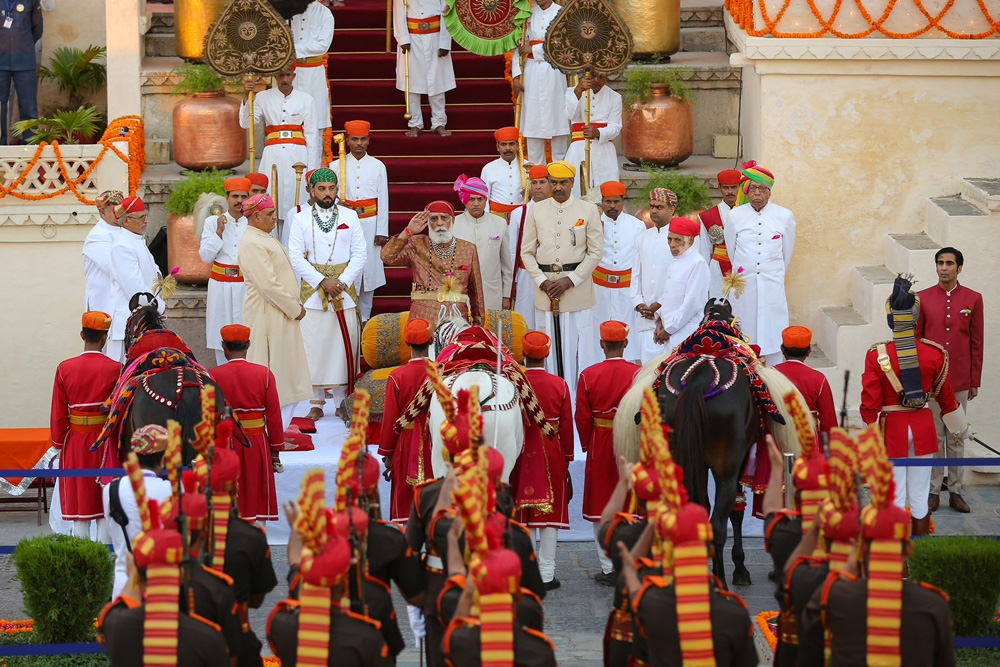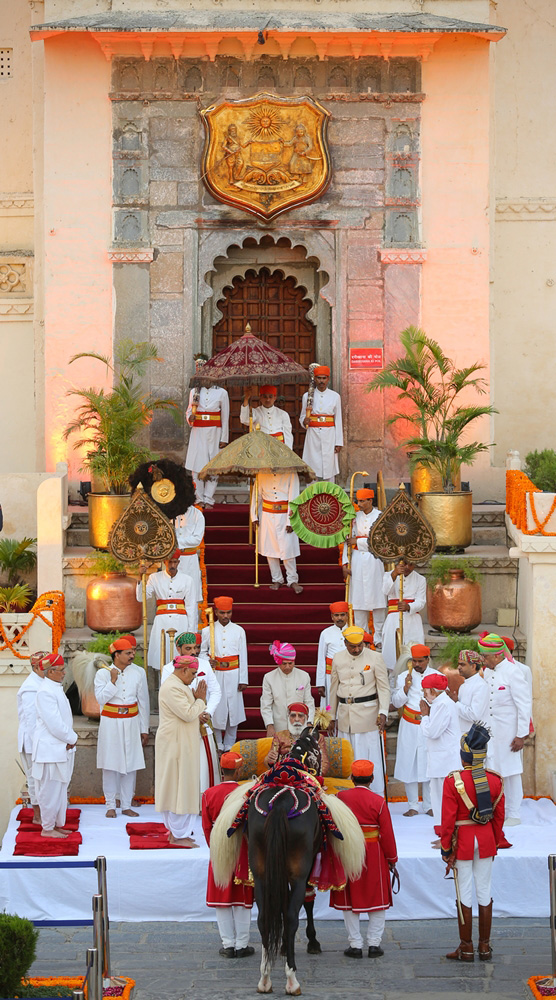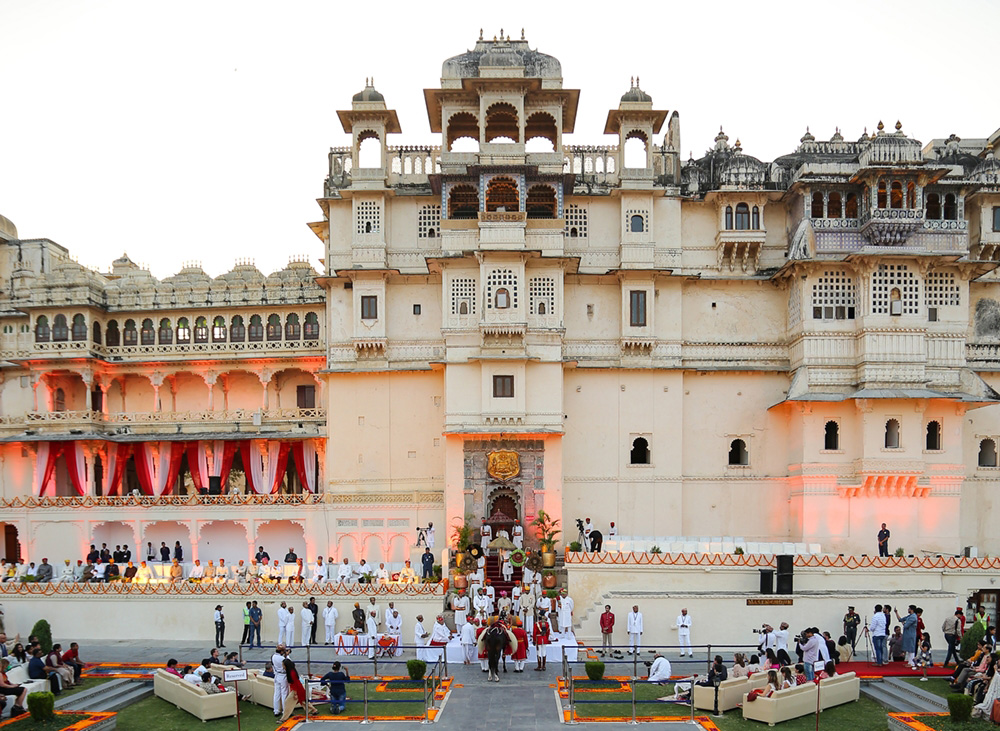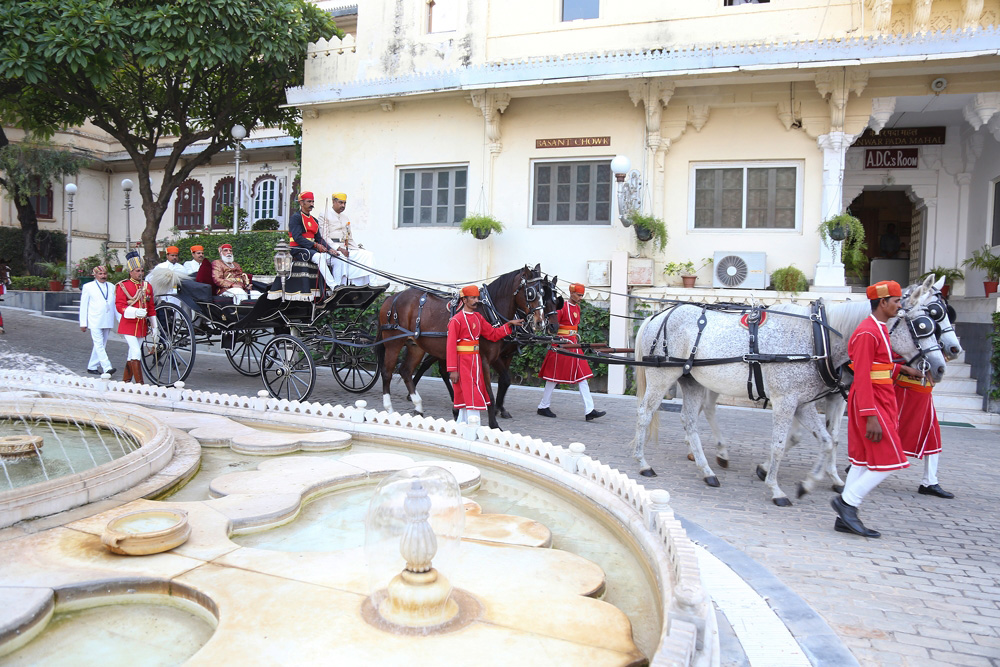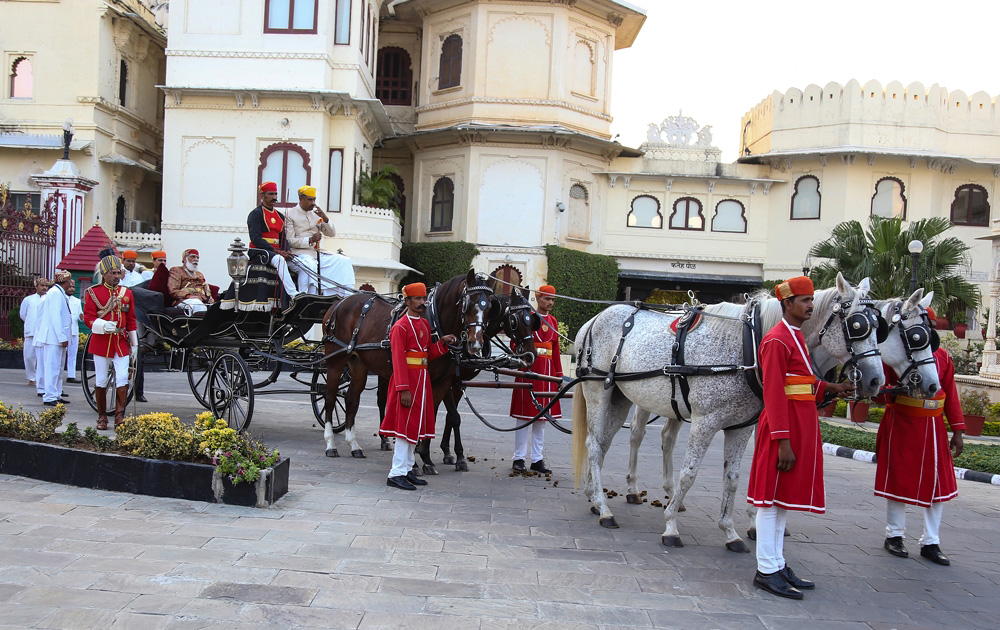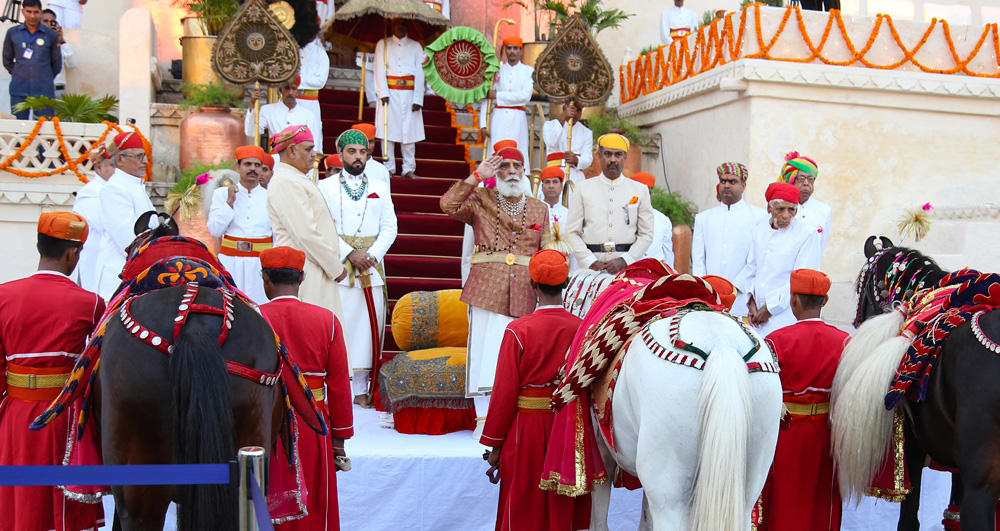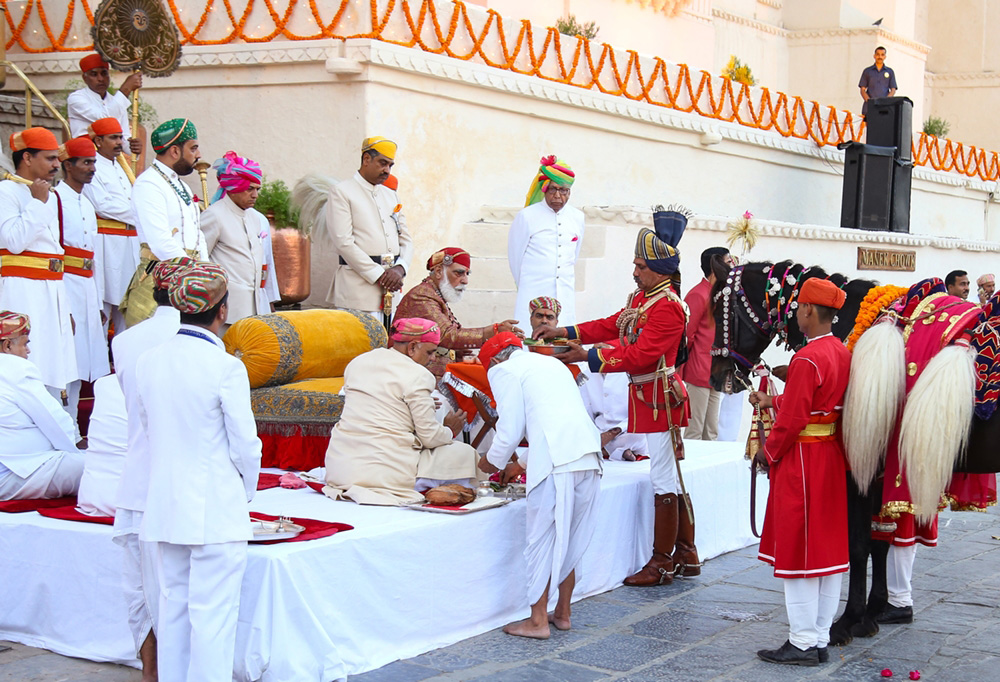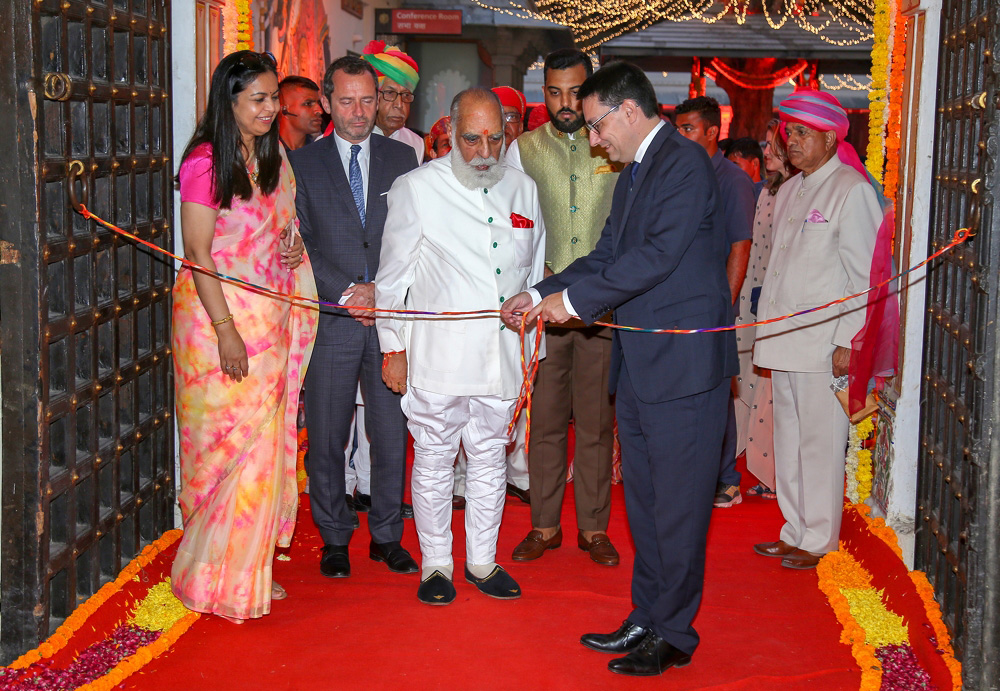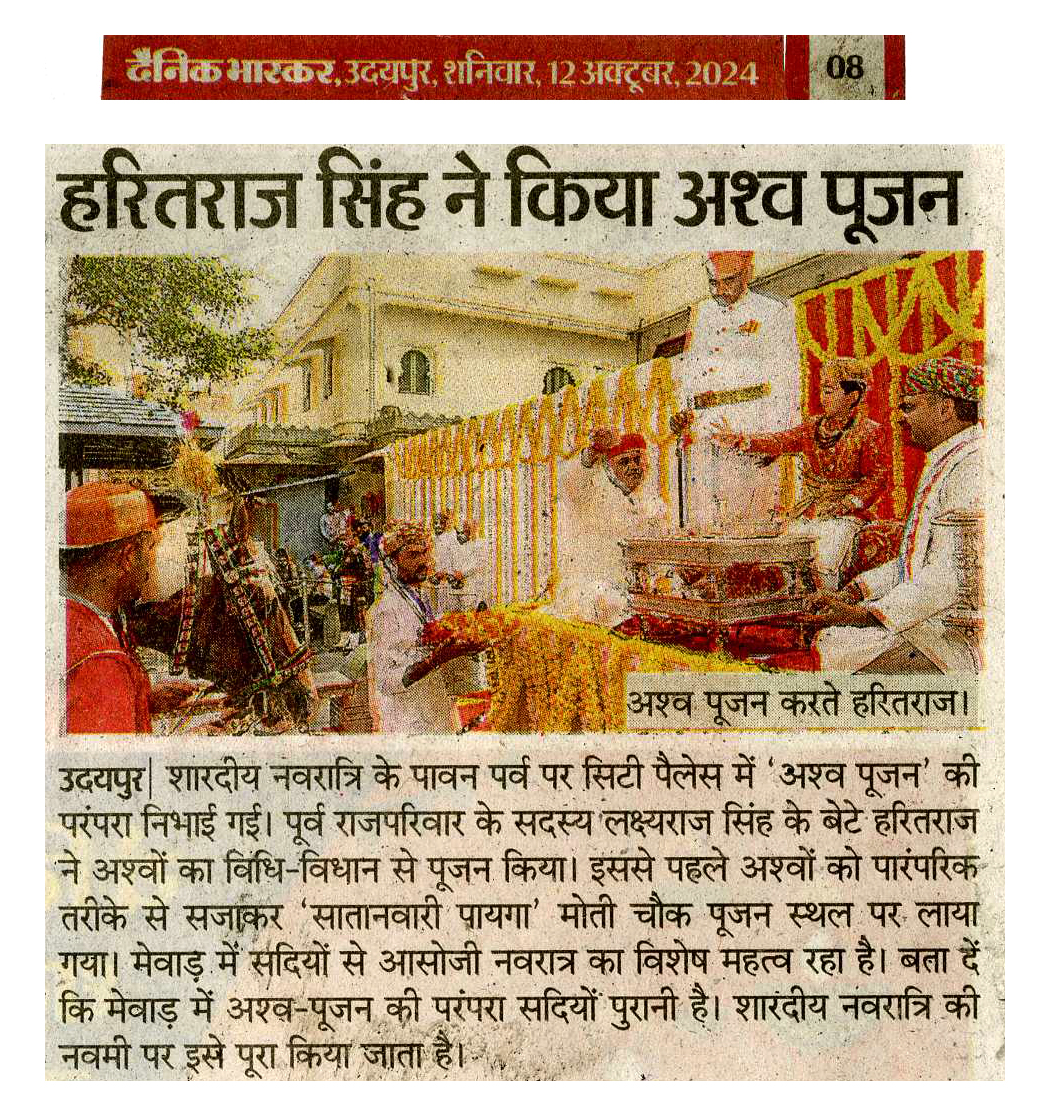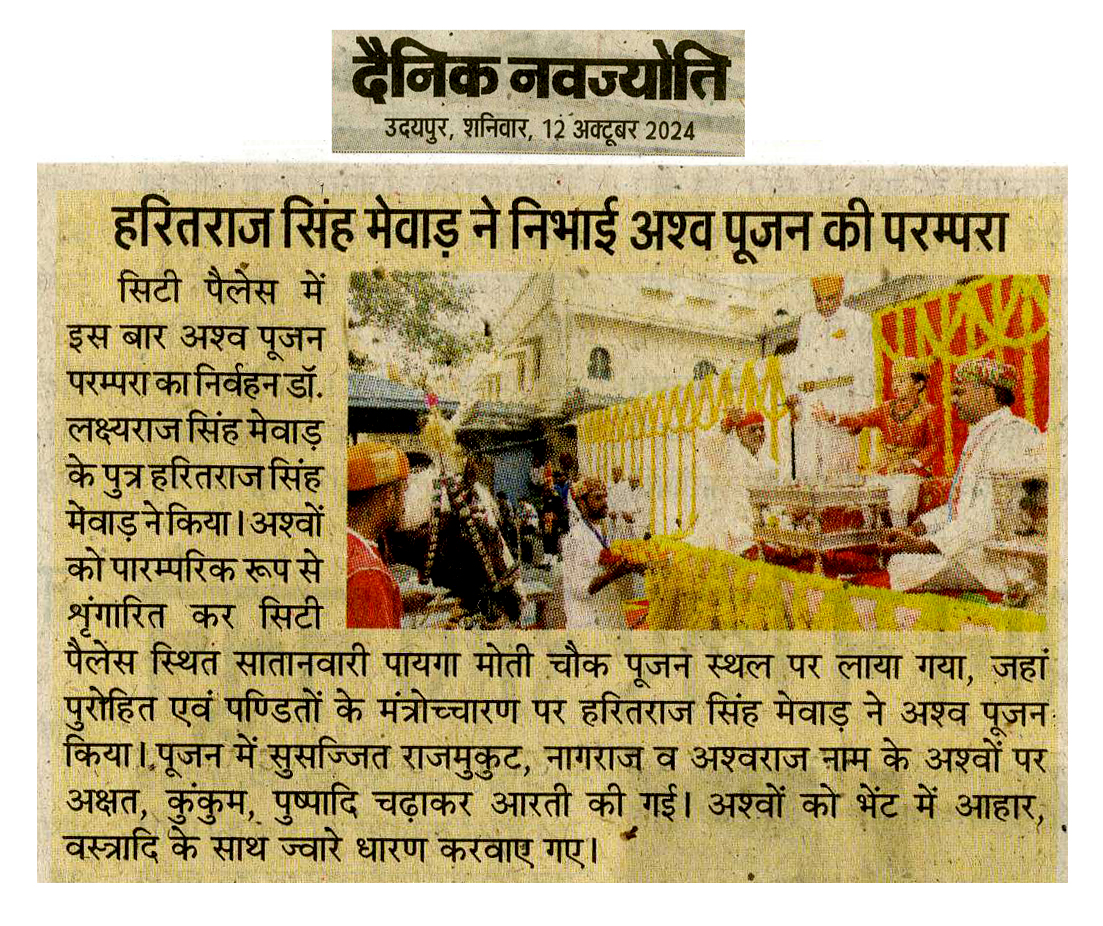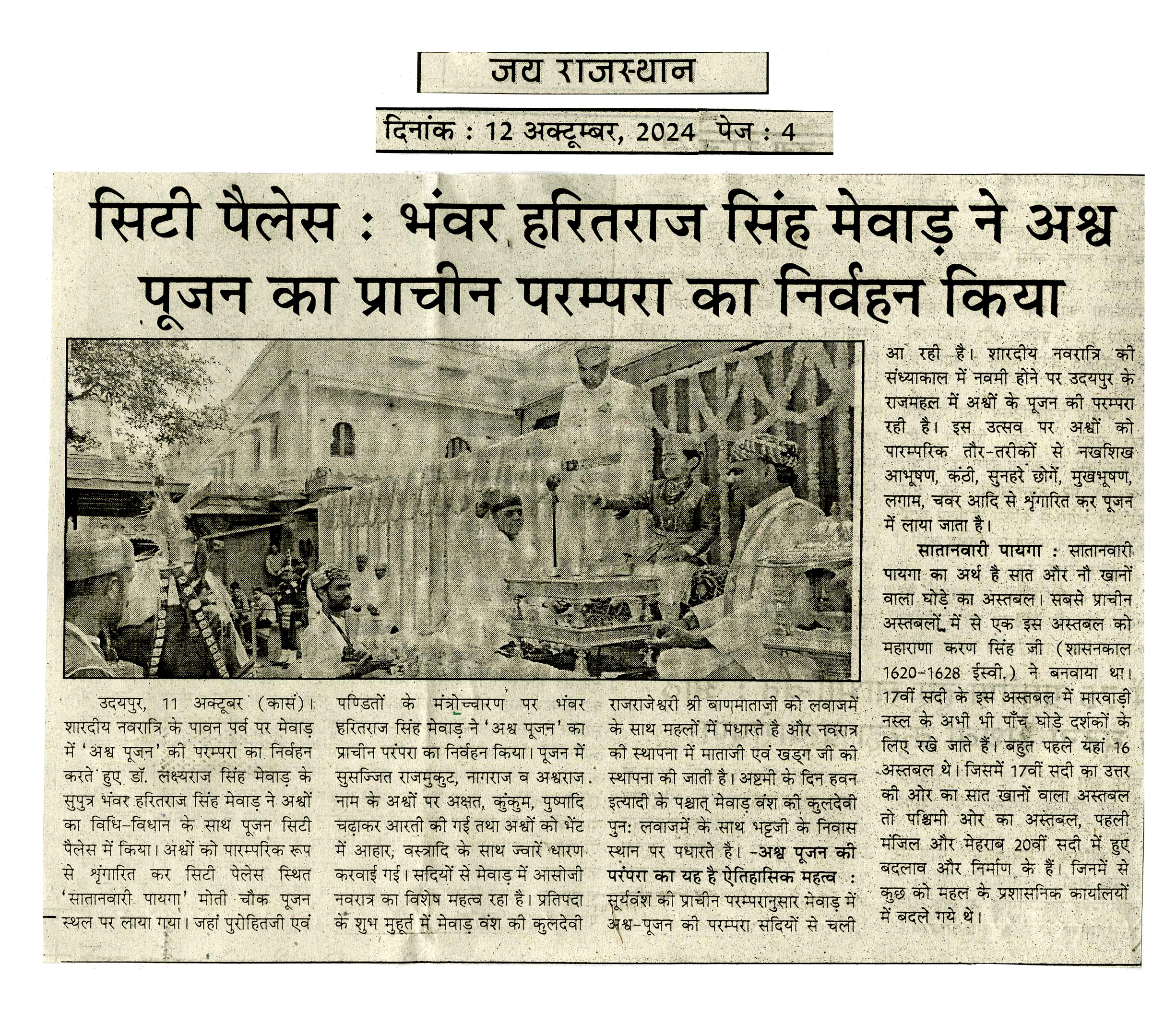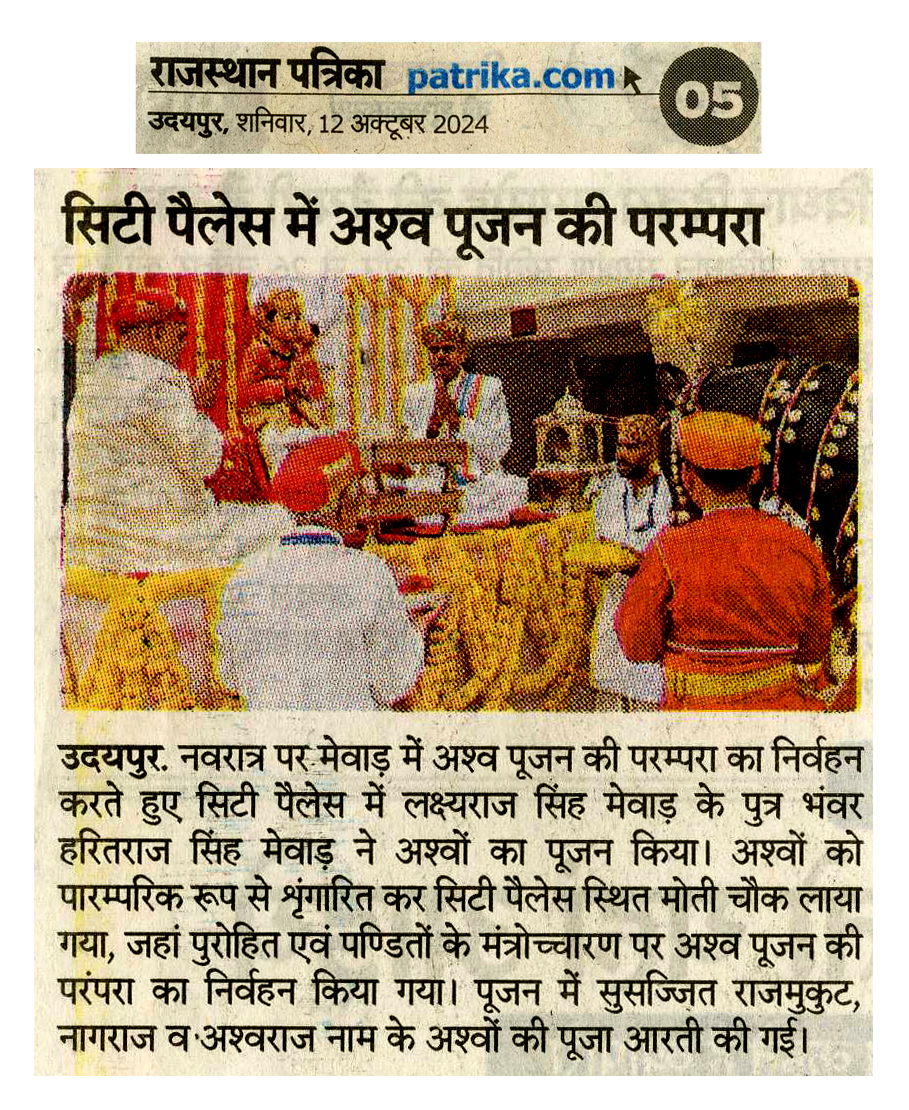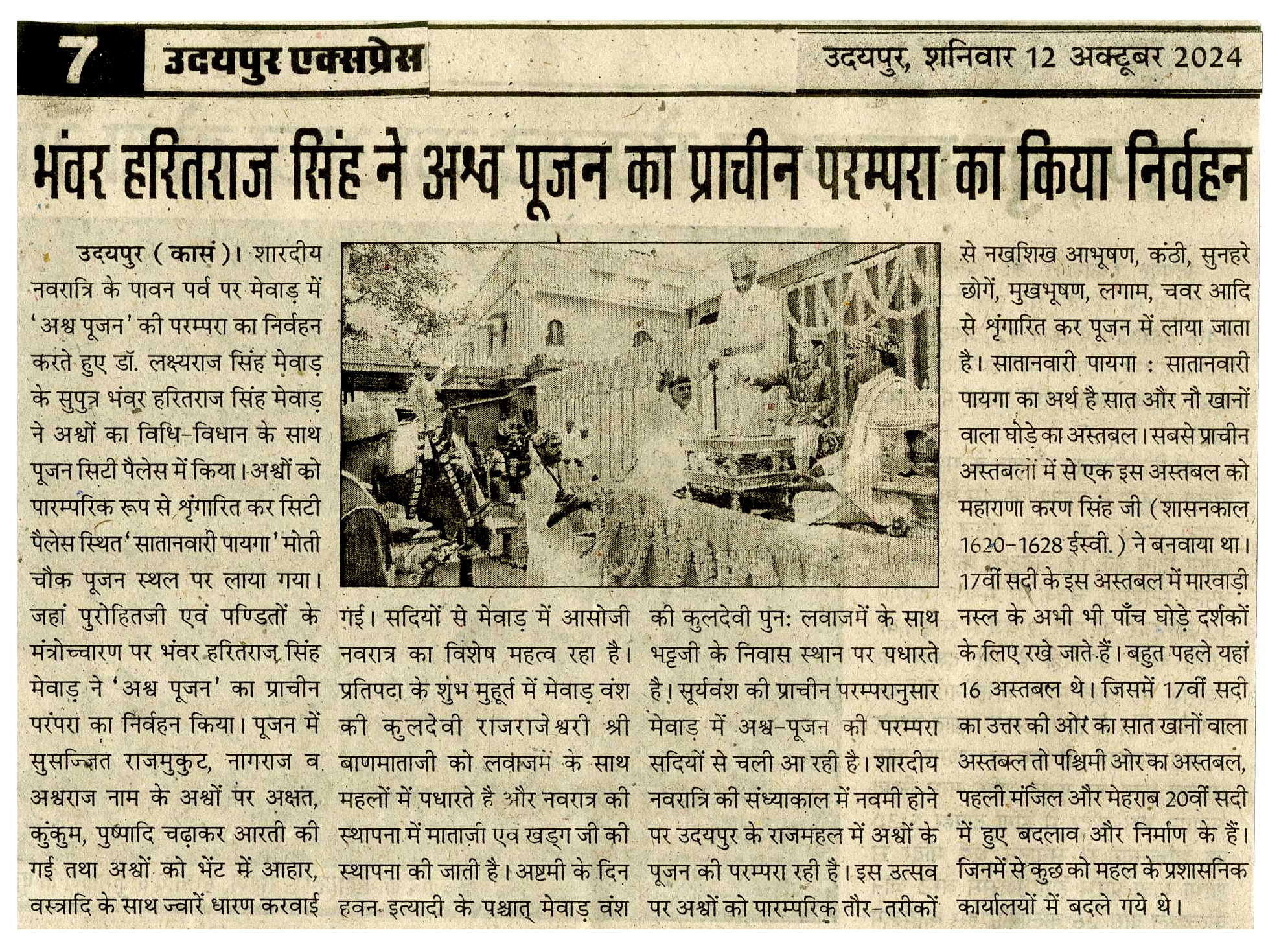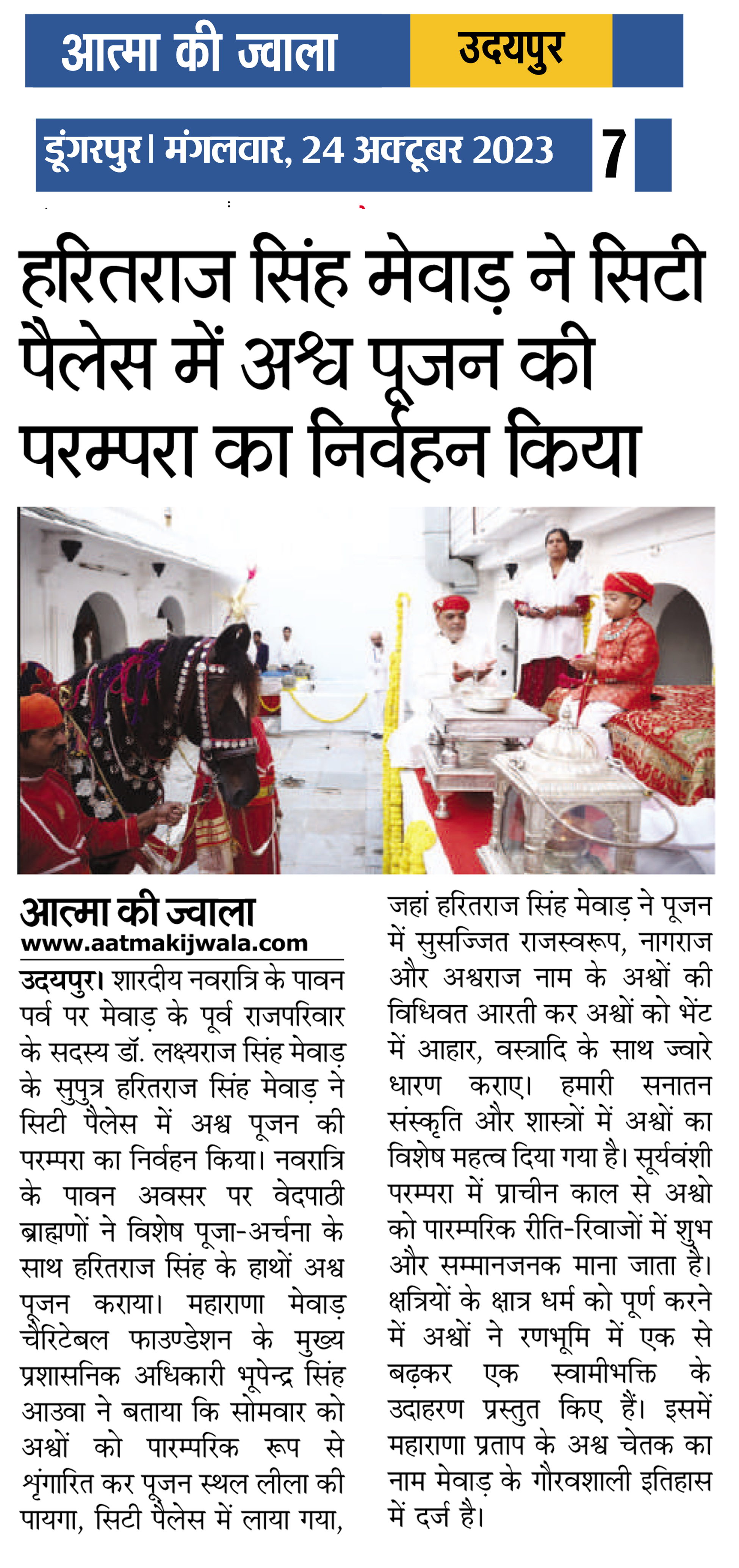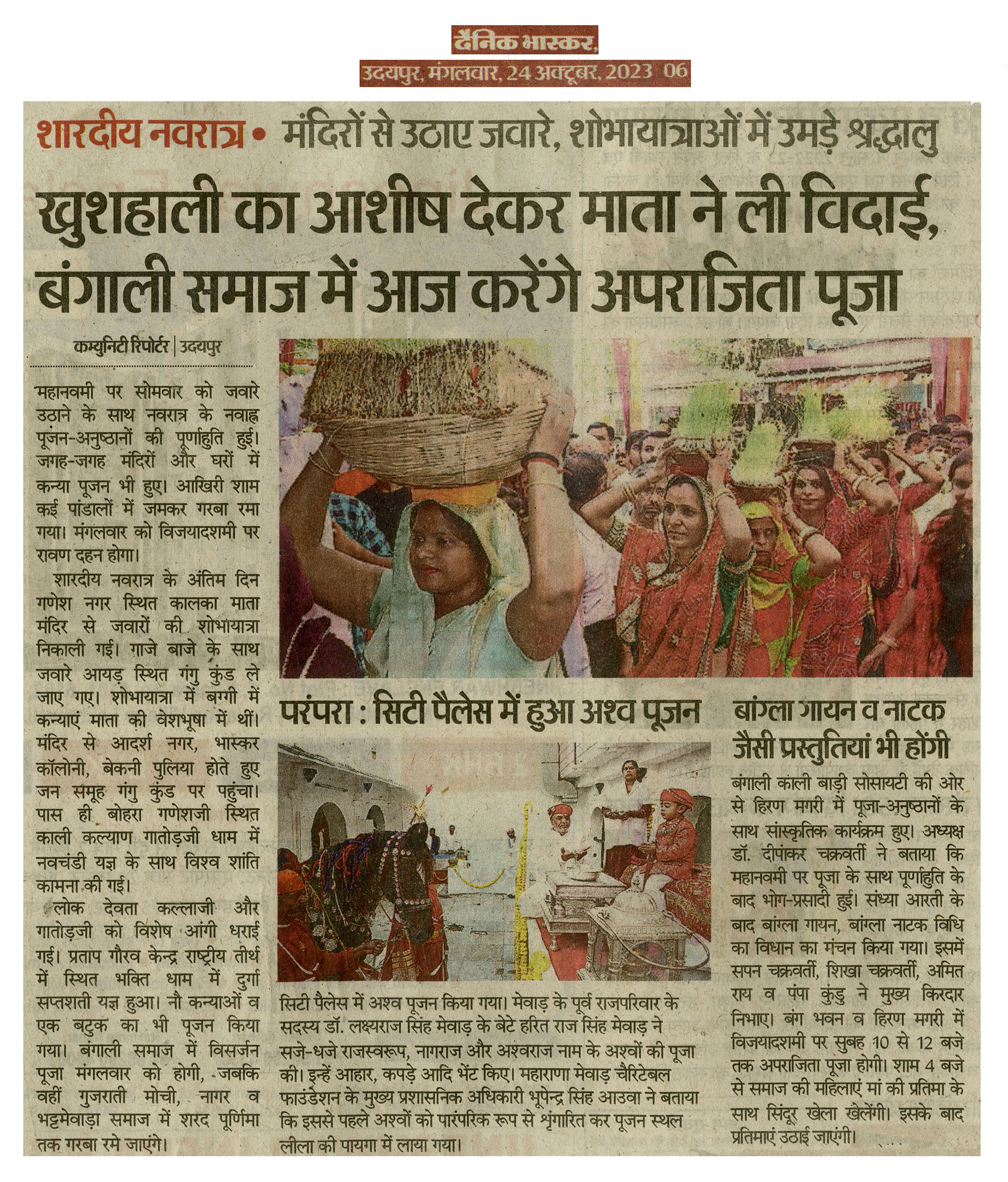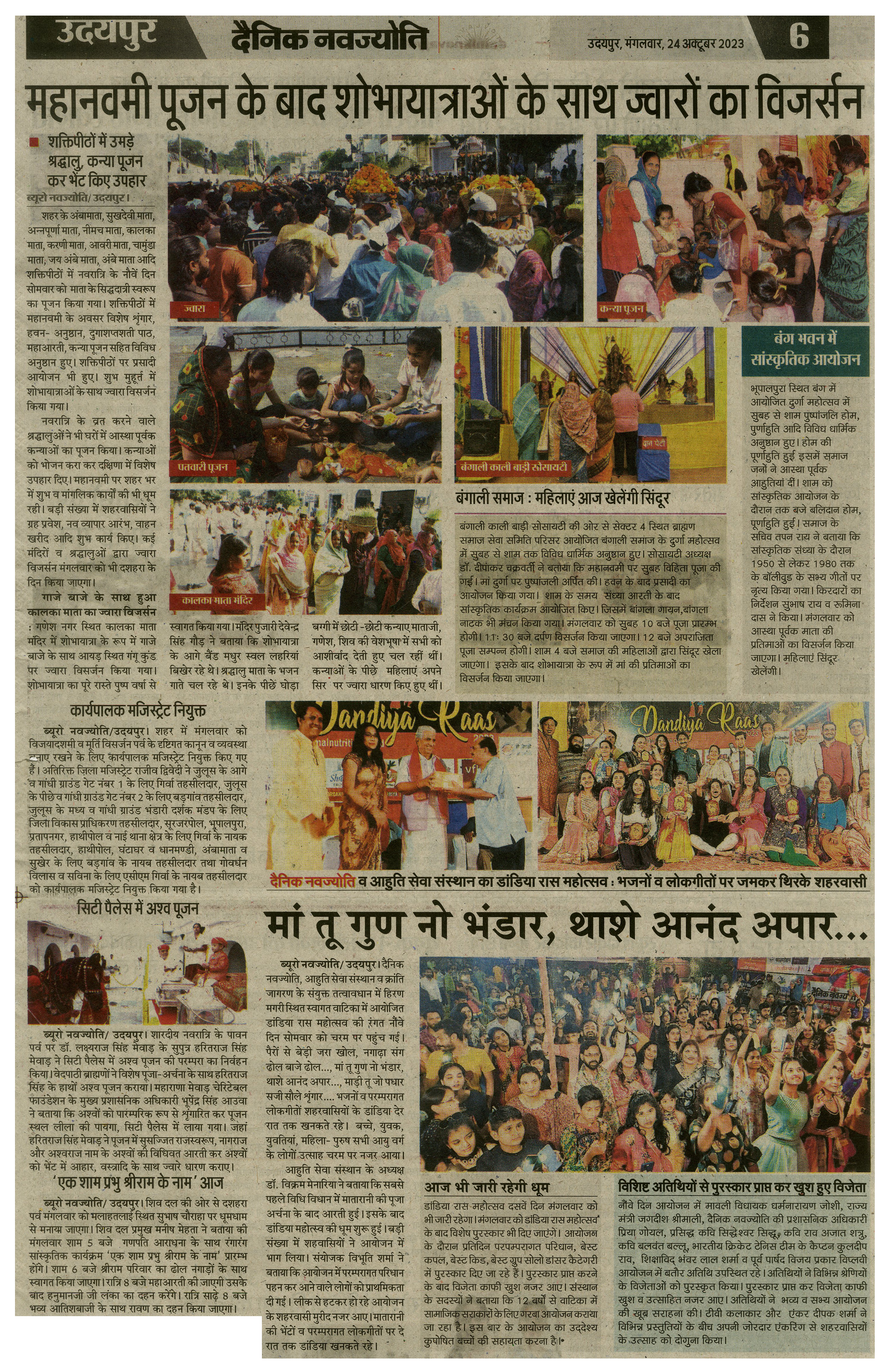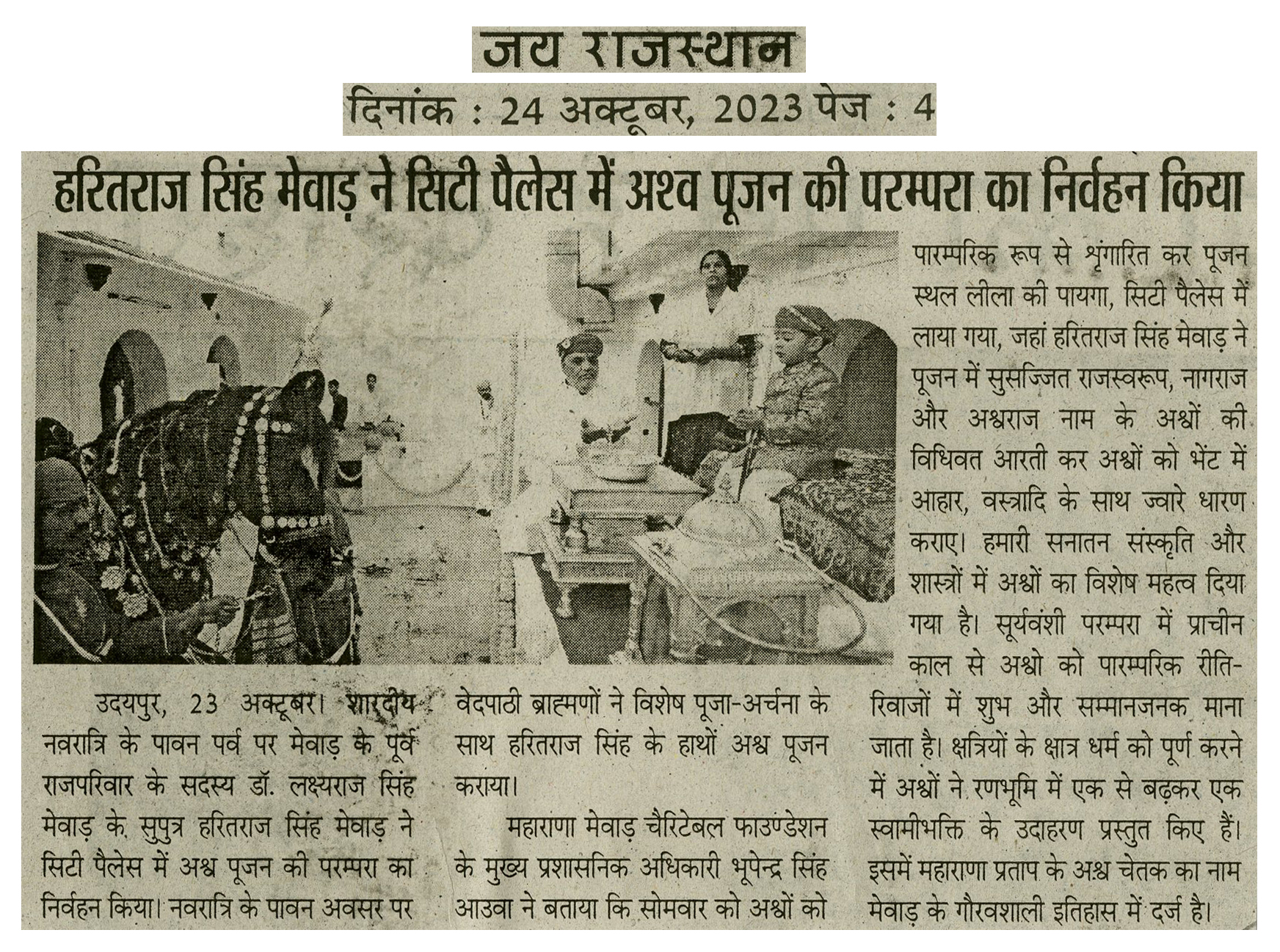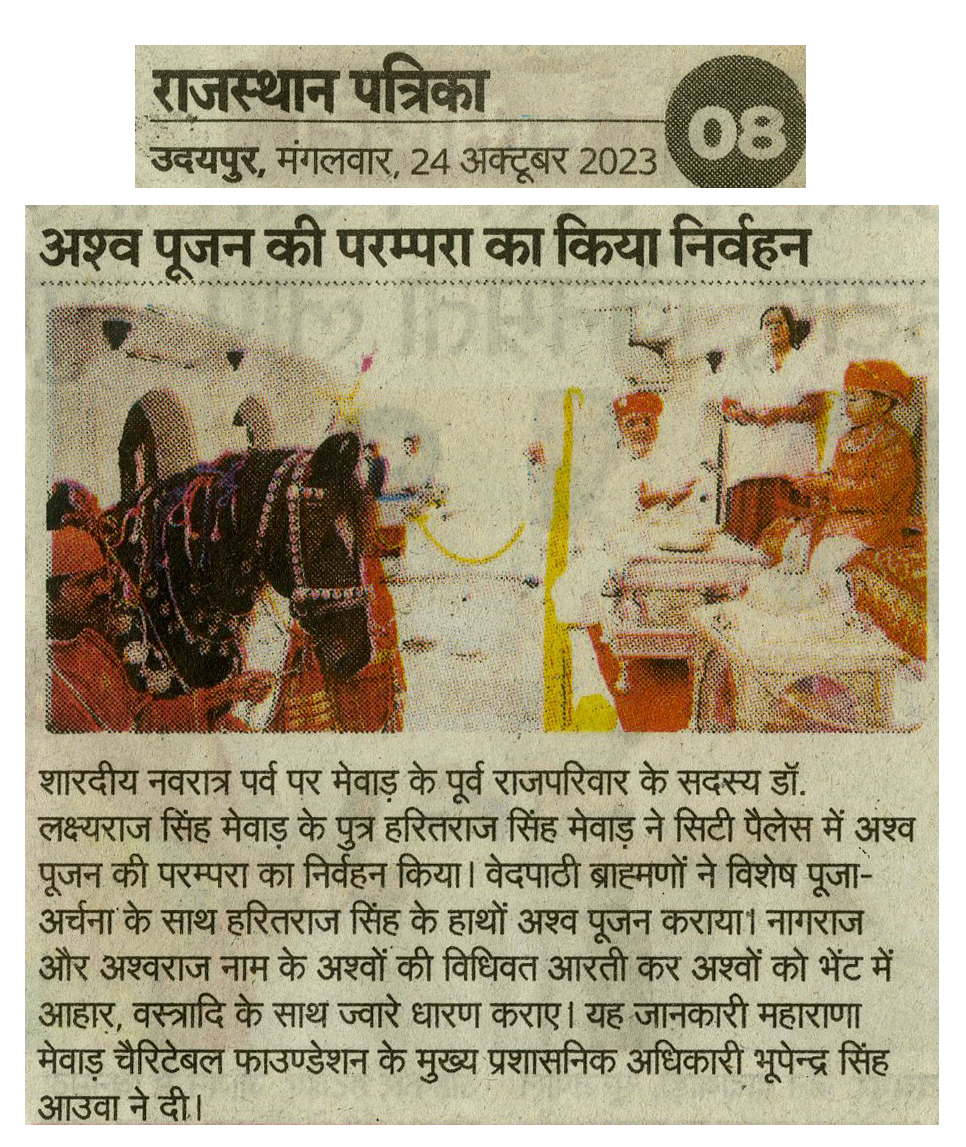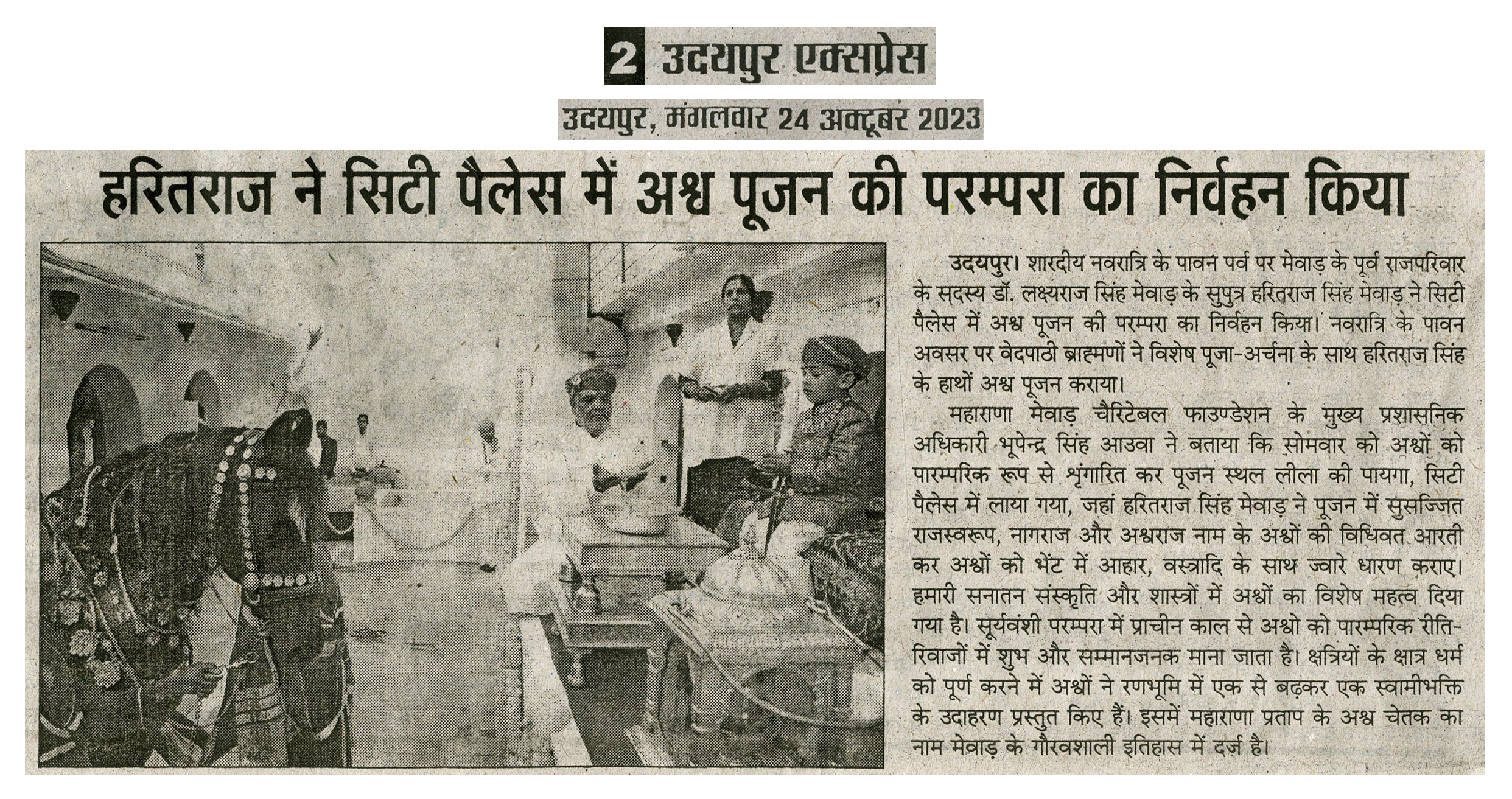
Ashwa Poojan
Introduction
Programme
British Thoroughbreds At Udaipur
Poojan
Celebrating Living Heritage
The Regal Horse Jewellery
The Royal Marwari Horses
Photographs From Our Archives
Gallery
Media Coverage
-
Message from Shriji Arvind Singh Mewar of Udaipur
The House of Mewar represents the longest serving, unbroken custodianship in the world. It is a custodianship that transcends all boundaries of kingship, democracy and everything in between. The legacy of the House of Mewar has been passed on since Seventy Five generations and is still alive in our ceremonies, rituals and festivities. People, from near and far , become its stakeholders as they experience this 'living heritage'.
This heritage is not a sculpture carved in the past, al dente and voiceless, which time will inevitably grind down and turn to dust; it lives with us and as we live, evolves and thrives becoming even more burnished and beautiful with the passing of each day .
The City Palace Complex was and continues to be the site for all the rituals, spectacles and celebrations of the royal family. As the Seventy Sixth custodian of the House of Mewar I am honor bound to continue this legacy and discharge my duties to keep alive the Living Heritage of Mewar through the Eternal Mewar Festivals. The sparkle of the bright ceremony of Ashwa Poojan – 'A timeless gratitude to Equinity', the ritual burning of ignorance and sloth on Holika Dahan – 'A time honored Regal ceremony' and the celebration of the creation of the universe through the melodious and vibrant Kartik Poornima – 'Experience the Mystique of life' on a brilliant moonlit night are examples of a breathing and living Palace Complex.
I feel honored to extend an invitation and welcome all the people who share the same thought and hope that witnessing the Eternal Mewar Festivals will help you in becoming a part of this Living Heritage for it is something to be shared and cherished.
Arvind Singh Mewar
76th. Custodian House of Mewar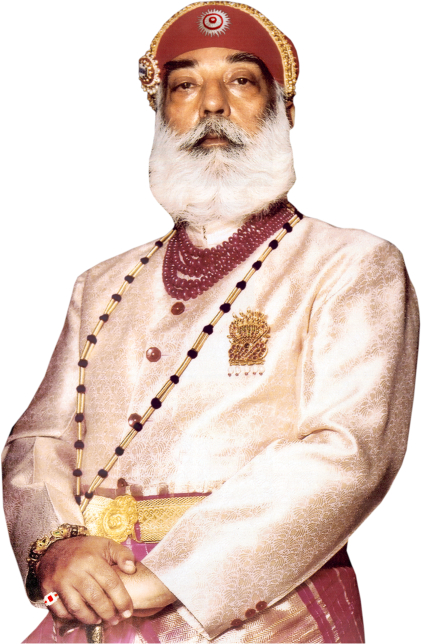
-
Ashwa Poojan Ceremony
The autumn navratri (nine sacred days and nights) forms one of the auspicious times in the Hindu calendar. On the ninth day of Navratri, which is a symbolic day of victory, arms and other symbols of the warriors are worshipped in northern India. In Rajasthan, famous for its cavalry charges, this day is also marked by the worship of war animals like the elephant and the horse. The worship of the horse, Ashwa Poojan, continues till date. The horses that are part of the rituals are those belonging to the
'Marwari' breed, a distinct internationally recognized breed that is threatened with extinction. MMCF and Shriji Arvind Singh Mewar of Udaipur, has set up the Equine Institute Udaipur to maintain a viable population of this culturally important animal. They are fully bred and nurtured by Maharana of Mewar Charitable Foundation, Udaipur. The ceremony begins with the arrival of Shriji Arvind Singh Mewar of Udaipur, Chairman and Managing Trustee, MMCF in a 1905 vintage 'English Royal Landau' with a regal procession consisting of royal insignias such as two Chadiwalas carrying the long gold staff, two Gota - walas carrying the short gold batons symbolizing the authority of the state. Two men carrying the Fly - Whisk are positioned at the back of the Horse drawn carriage. At the high raised platform from where Shriji conducts the Ashwa Poojan Ceremony two men wearing Chapdas (Coat of Arms of the House of Mewar), two men carrying Mor Chal (Peacock feathers), one carrying the Adani (Velvet cloth fan) and one carrying the Meghadambar (Feather Fan). One man carrying the Karaniya (A cloth with an embroidered Sun Emblem on one side and the moon on the other) and another one carrying the Chattra (large umbrella) are also present. In the auspicious time, with the Vedic chanting by the priests, the Maharana after the horses were bathed; took resolution of worshipping either 3, 5, 7, 9 or 11 caparisoned horses, present in odd numbers. Horses would be wearing new clothes and were worshipped by putting a tilak. Then, they are fed moong, gram, jaggery, puri and jowar, after which the Maharana performs their Aarti at the end. Before worshiping, it was also a practice to take the horses in procession, in the morning to bathe in the pond. Presently, this tradition is performed by sprinkling water on the horses before worship. In the earlier tradition of Mewar, Maharana used to perform Gaj (Elephant) worship too with Vedic hymns after Ashwa Poojan sitting at Naginabadi darikhana. After that Maharana used to bid farewell to the Sardar-Umrao (Nobles) by offering a Betel Bida and give them leave to carry out other religious works.
-
British Thoroughbreds at Udaipur
Immortalized by bards, ballads and balladeers, Chetak the horse ridden by Rana Pratap in the battle of Haldighati in A.D. 1576 is considered the epitome of the historical connect between Rajputs and their loyal horses. In 1909 the British Monarch King Edward VII with great political and cultural sagacity chose to send two thoroughbred horses to Maharana Fateh Singh as return gifts. This was in recognition of the gift made by Maharana Fateh Singh of select rifles from the Palace Armoury to his son, the Prince of Wales (Later King George V) for the latter's royal shoot in Nepal. The daily account of the life of the Maharana faithfully records the date of arrival of the state gifts as 1st September 1909. Named 'Red Lad' and 'Expert', these horses were accommodated at special stables built at the Jaleb Chowk, within The City Palace Complex. The horses are believed to have been personally chosen by the British Sovereign after their Sterling performance in several horse fairs in England and were thus found worthy of being sent as state gifts to a valued and much respected royal friend.
BRITISH THOROUGHBREDS AT UDAIPUR
Bourne & Shepherd, 'Expert', Thoroughbred Horse Expert' was distinguishable from 'Red Lad' the other horse by its four uniformly coloured feet.
Silver gelatin print, c. 1909, 101 x 132 mm, City Palace, Udaipur, A. No. 2008.04.0002 ' Image courtsey: Pictorial archives of Maharanas of Mewar, Udaipur.
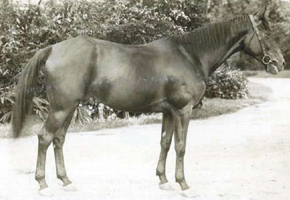
BRITISH THOROUGHBREDS AT UDAIPUR
Bourne & Shepherd, 'Red Lad', Thoroughbred Horse 'Red Lad' was distinguishable from 'Expert' by the distinct white patch on his rear left foot.
Silver gelatin print, c. 1909, 100 x 133 mm, City Palace, Udaipur, A. No. 2008.04.0003 Image courtsey: Pictorial archives of Maharanas of Mewar, Udaipur.
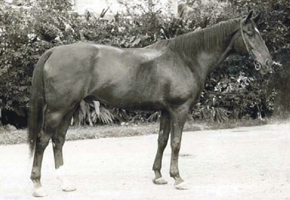
-
Ashwa Poojan 2016

Ashwa Poojan 2015
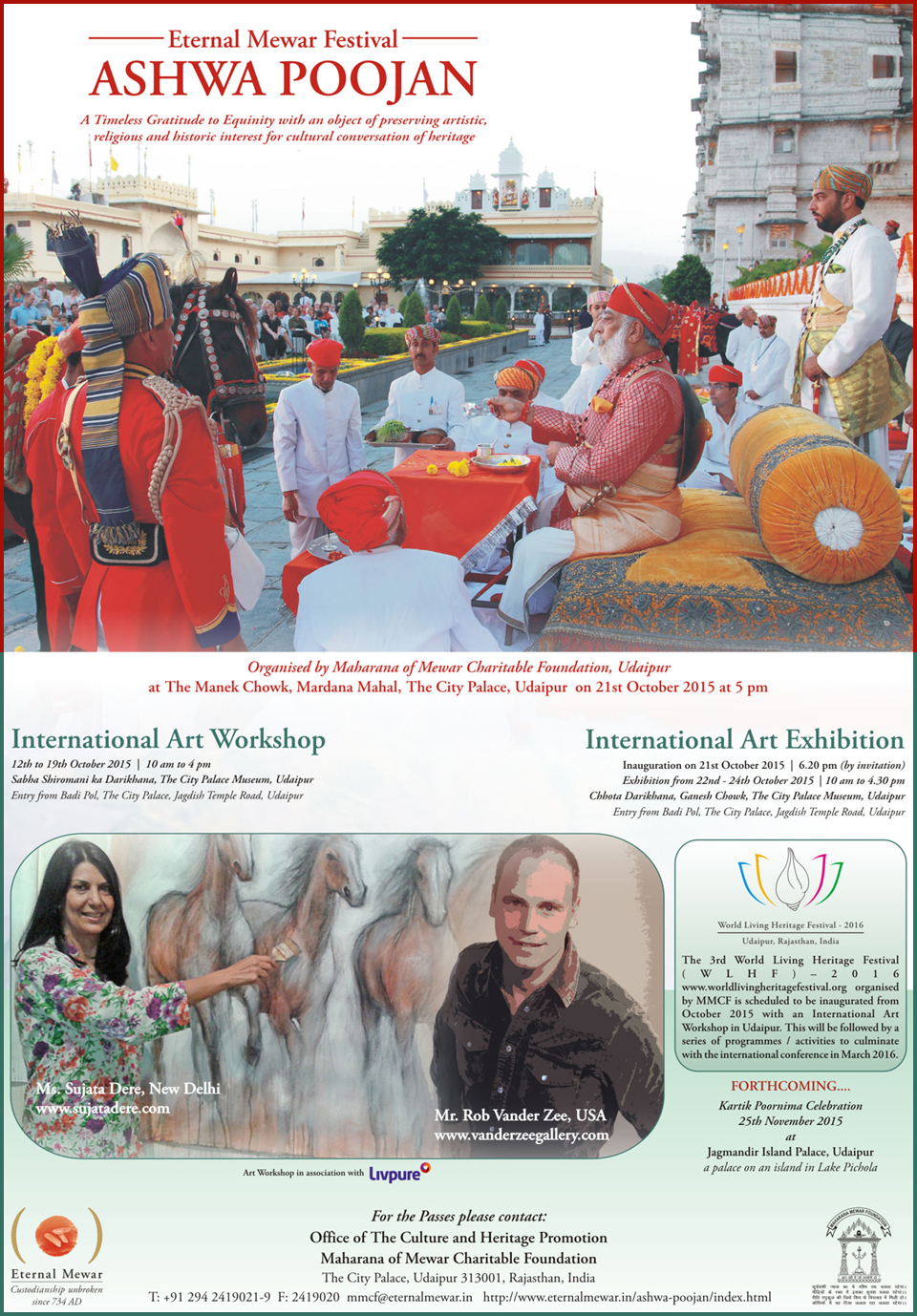
Ashwa Poojan 2014
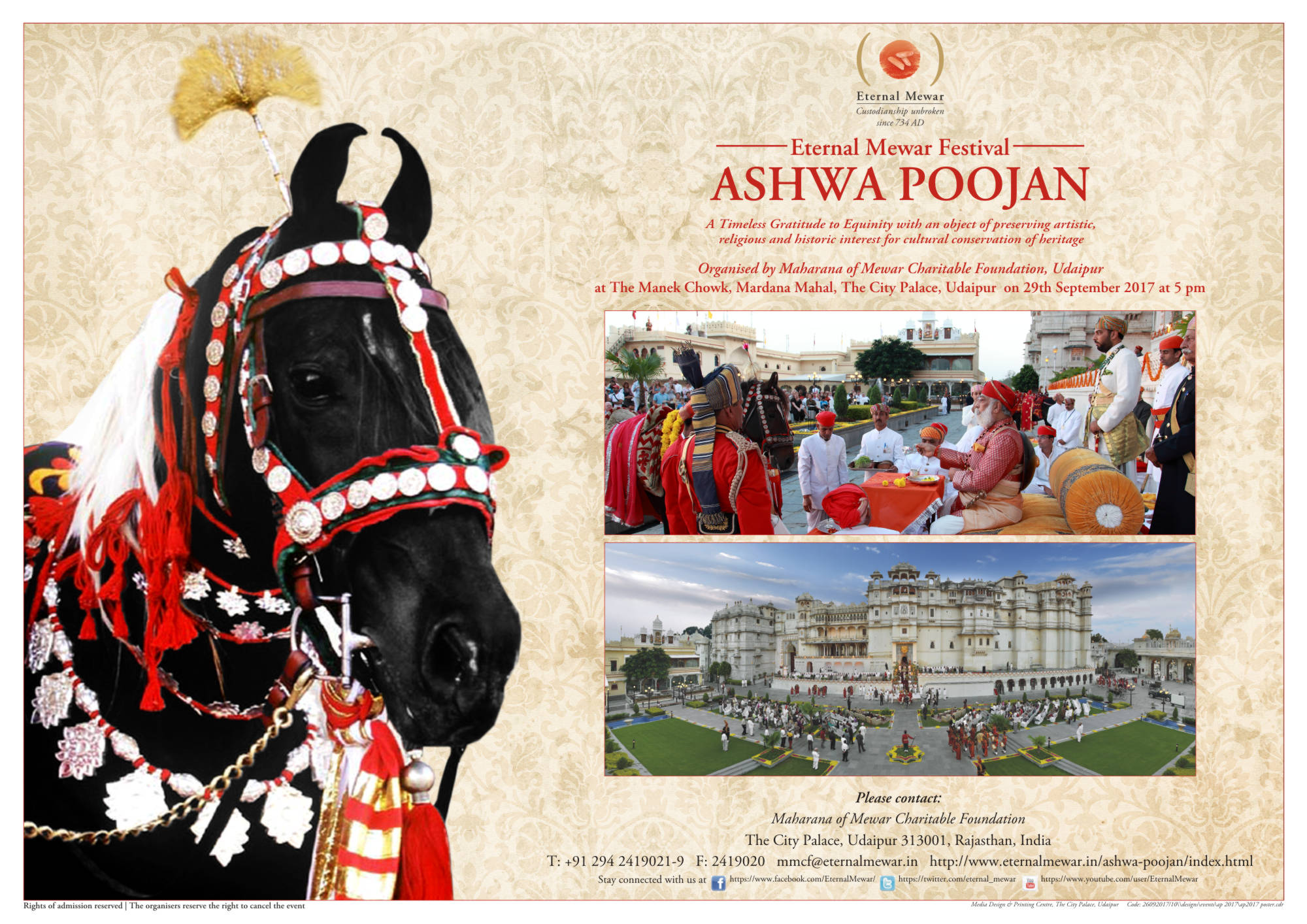
Ashwa Poojan 2013 - A Timeless Gratitude to Equinity
The Manek Chowk, Mardana Mahal, The City Palace, Udaipur
Sunday, 13th October 2013Navratri is one of the most auspicious times in the Hindu calendar. The festival of Navratri, lasting for nine days and nights and hence known as Navratri, is dedicated to the worship in our Hindu mythology of the goddess Durga, the consort of Shiva. Navratri is celebrated in full vigour in Rajasthan, the land of Rajputs.
On the ninth day of Navratri, Rajputs everywhere recognize the various aspects on which their dependence and survival necessary lies. It is not surprising that one cannot separate a Rajput from his horse and the reliance and dependence of Rajput on horse can, in no way, be undermined. It is therefore appropriate that one day in the year be especially dedicated in recognition of the usefulness of the horse and its contribution to the survival of the Rajput community.
The horses participating in the poojan belong to an internationally recognized breed known as 'Marwari'. This name is reflective of their area of origin, which is now a part of the present state of Rajasthan. The salient characteristics of the breed are that they are extremely sure-footed on hard rocky terrain and are at equal ease in the sands of the desert. Besides these versatile features, they are good battle companions, as they possess the extraordinary ability to rejuvenate themselves by overnight rest and a simple sand bath.
.jpg)
Ashwa Poojan 2012 - A Timeless Gratitude to Equinity
Ashwa Poojan Ceremony in 2011
at The Manek Chowk, The City Palace Complex, UdaipurYou see him from the corner of your eye; his taut muscles, shining coat and a nodding head instantly make you pause. Even as you walk towards him his neighing increases, creating a comfort level. That's what a horse does to you. There's an instant bonding which takes place with this magnificent animal. As far as Rajputs are concerned there is no better companion for them than their loyal and beloved horse. The relationship between the two can be dated back to many centuries in the past. Both have grown up respecting and loving each other more and more with time.
Rajputs have proven to be great warriors in history but one will never find a Rajput going into the battle field without his loyal horse by his side. 'Chetak' – the brave and mighty horse belonging to Maharana Pratap is an example of the relationship a Rajput shares with his horse. Paying respect and honor to the horse in recognition of his unfailing contribution to the survival of the Rajput race, one day in the year is dedicated to their worship which is how 'Ashwa Poojan' meaning 'worship of the Horse' came into existence. The Houseof Mewar having one of the bravest Rajput warriors in history have been celebrating 'Ashwa Poojan' from time immemorial without fail. The 76th and present custodian of the House of Mewar , Shriji Arvind Singh Mewar of Udaipur has been passed on this legacy from his ancestors and has taken it upon himself to continue this ceremony keeping alive the Living Heritage of The House of Mewar.
'Ashwa Poojan' is celebrated at The City Palace Complex each year on the last day of Navratri, nine most auspicious days in the Hindu calendar . The ceremony begins with the arrival of Shriji Arvind Singh Mewar of Udaipur in a 1905 vintage 'English Royal Landau Six-in-Hand' with a regal procession consisting of royal insignias such as two Chadiwalas carrying the long gold staff , two Gota-walas carrying the short gold batons symbolizing the authority of the state. Two men carrying the Fly- Whisk are positioned at the back of the Horse drawn carriage. At the high raised platform from where Shriji conducts the Ashwa Poojan ceremony two men wearing Chapdas (Coat of Arms of the House of Mewar), two men carrying Mor Chal (Peacock feathers), one carrying the Adani (Velvet cloth fan) and one carrying the Meghadambar (Feather Fan). One man carrying the Karaniya (A cloth with an embroidered Sun Emblem on one side and the moon on the other) and another one carrying the Chattra (large umbrella) are also present.
The Palace Band is positioned in front of the high raised platform from where Shriji worships the five royal horses namely Raj Tilak, Raj Roop, Ashwaraj, Raj Swaroop and Raj Mukut. These horses belong to the internationally recognized breed known as 'Marwari'. They are fully bred and nurtured at Shriji's personal Imperial Stud Farms at Shikarbadi, Udaipur.
The sacred ceremony is followed by a 'Nazrana' - a traditional ceremony where the noblemen of the city along with guests pay homage to the 76th Custodian of The House of Mewar.
An array of sumptuous refreshments organized by the HRH Group of Hotels awaits the guests at Khush Mahal bringing a memorable end to the magnificent and beautiful evening.
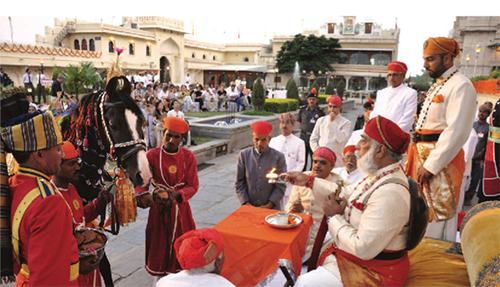
-
Maharana Bhupal Singh (r. 1930 - 1955) presiding over the Ashwa-Gaj Poojan at The Manek Chowk, 1939 or earlier
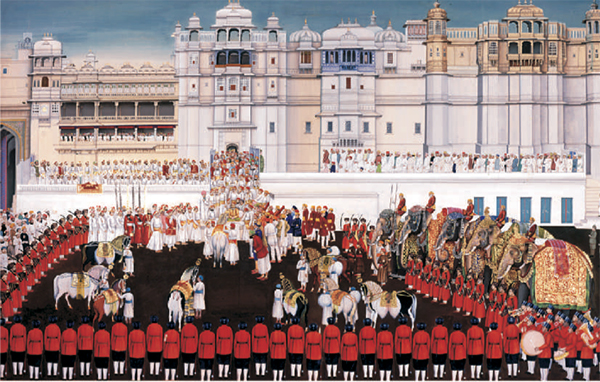
Shriji Arvind Singh Mewar of Udaipur presiding over the Ashwa Poojan at The Manek Chowk, 2011
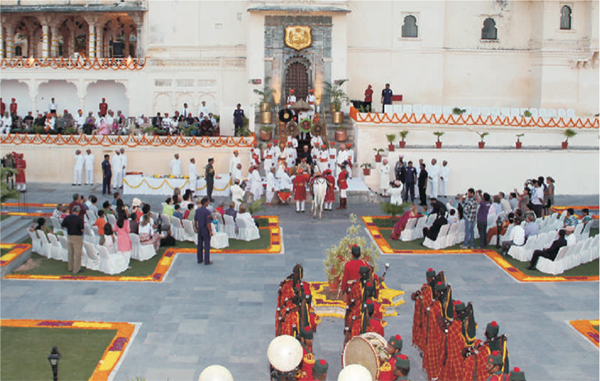
-
The Regal Horse Jewellery

The Regal Horse Jewellery
1. 1. Kalingi - Ornament which stands up between the horse's ears
2. Phuldi - Silver necklace
3. Halra - Silver necklace
4. Mora - Worn on the face of the horse
5. Neveri - Silver ornament that is worn around the knee
6. Palli - Saddle cloth
7. Gajgao
8. Odani - Cloth that covers the saddle
9. Jean - Saddle
10. Dumchi - Leather piece covered in cloth and silver work that goes under the tail and is attached to the saddle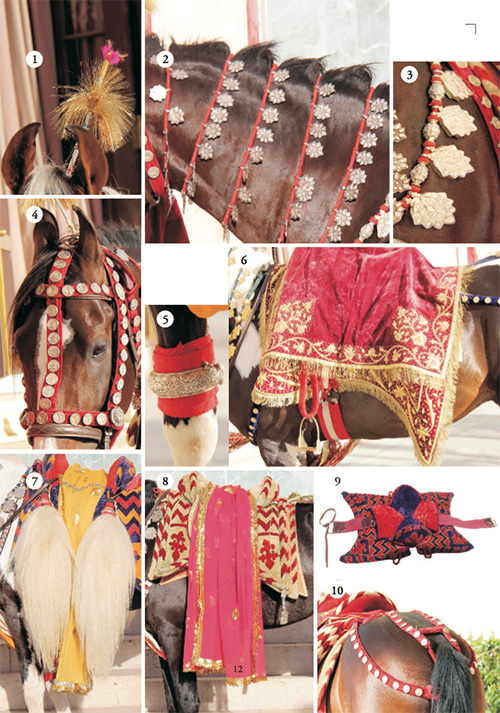
-
Ranbanka
Skewbald; 15 Years; Geld
YOB: 1996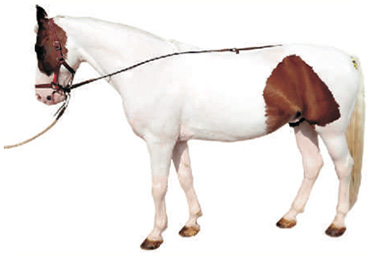
Raj Roop
Pie-Bald; 11 Years; Stallion
DOB: 14.02.2000
Sire - Sultan; Dam - Bani Than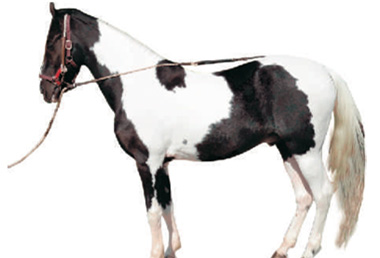
Raj Swaroop
Bay; 8 Years; Stallion;
DOB: 19.12.2003
Sire - Sultan; Dam - Raj Kirti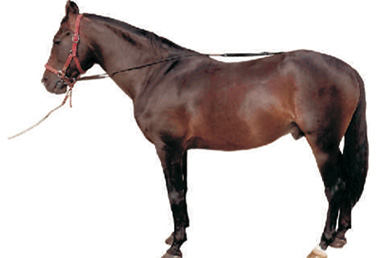
Raj Mukut
Skewbald; 6 Years; Stallion
DOB: 08.03.2005
Sire - Sultan; Dam - Rajeshwari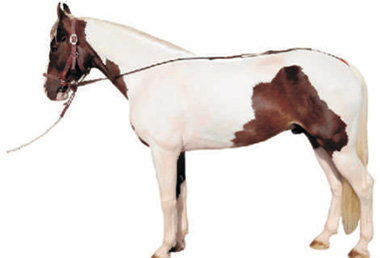
Ashwa Raj
Dark Bay; 6 Years; Stallion
DOB: 27.07.2005
Sire - Sultan; Dam - Raj Kirti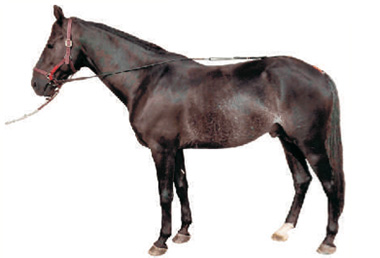
-
Unknown Photographer
Maharana Bhupal Singh at the Ashwa Poojan festivities
Silver gelatin print, c. 1950, 110 x 149 mm, City Palace, Udaipur, A. No. 2008.04.0004
Image courtsey: Pictorial archives of Maharanas of Mewar, UdaipurMaharana Bhupal Singh (r. 1930-1955) leading the ceremonial religious rites during the Ashwa Poojan festivities at The Manek Chowk, the City Palace Complex, Udaipur. The City Palace Museum at Udaipur also has large format paintings in the Mewar style which record the Maharana conducting the Ashwa Pooja.However by the mid twentieth century 'close-up' photography was steadily replacing the more traditional, detailed, large format court painting of similar
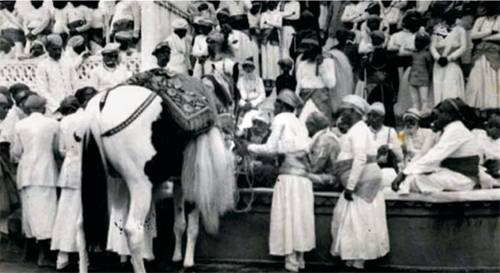
Rana Pratap and his horse Chetak during the battle of Haldighati in A.D. 1576.
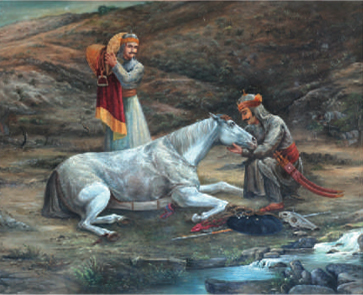
Prince Bhupal Singh is seen riding Unknown Photographer. Platinum print.
